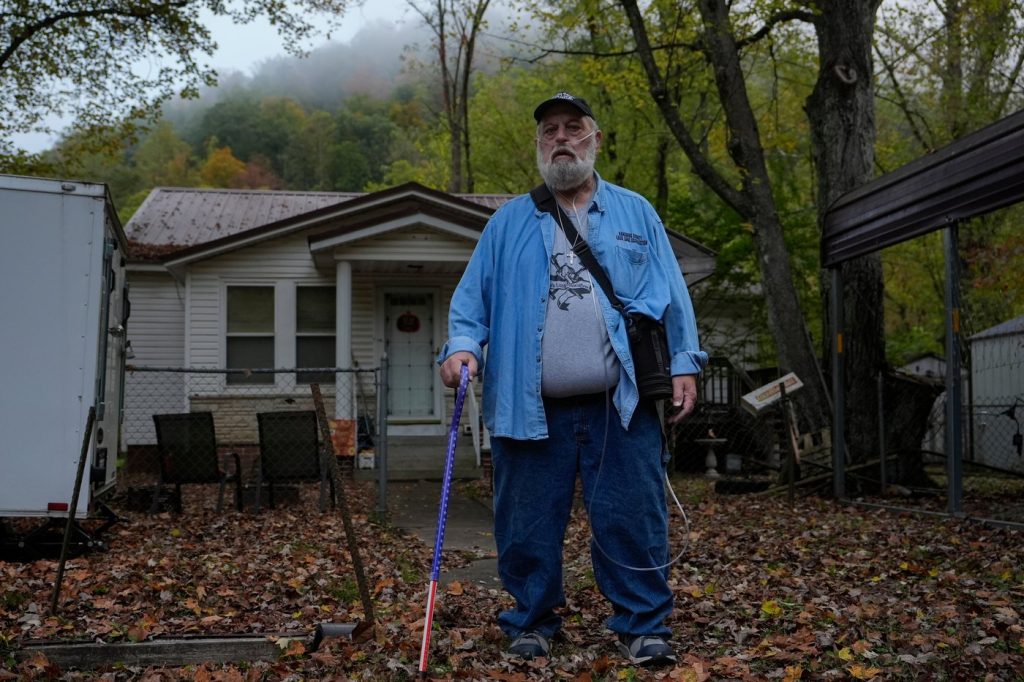OAK HILL, W.Va. (AP) — Lisa Emery, the director of the New River Health Association Black Lung Clinic, is passionate about her patients, whom she refers to affectionately as her “boys.” As a respiratory therapist, she encounters a stark reality—many coal miners in West Virginia, including those as young as 30 and 40, are suffering from black lung disease, a condition that was once deemed an affliction of older miners. Emery is particularly concerned about the rising rates of black lung disease among miners forced to dig deeper through silica-laden rock to access remaining coal seams.
Emery's worries are corroborated by recent statistics, which highlight alarming trends. A significant 55% of 11,500 coal miners from central Appalachia showed some form of black lung disease from 2020 to 2025, with rates peaking at 62% among the most recent patients. These figures are higher than the national average of 41% over the same period. Current mining practices expose workers to harmful silica dust, which is now recognized as a major contributor to black lung disease, exacerbating the health crisis among miners.
The U.S. Mine Safety and Health Administration (MSHA) had approved a new rule last year to cut federal silica dust exposure limits in half to protect miners. However, this regulation is now under threat due to political opposition and industry pushback. The Trump administration has been criticized for rollbacks on regulations that protect worker health, especially in the coal mining sector. Some miners, outraged by this situation, have publicly demanded President Trump honor his promises regarding miners' safety and health.
Compounding the issue are layoffs at the National Institute for Occupational Safety and Health (NIOSH), which jeopardize critical programs designed to monitor black lung cases. A federal judge intervened after a lawsuit forced some positions to be reinstated, but the overall staffing and expertise at NIOSH remain diminished. Recent measures proposed by the Labor Department could further weaken regulatory enforcement, undermining miners' health protections.
Many miners feel abandoned by lawmakers and industry representatives who seem to prioritize economic considerations over health. For instance, recent studies show that areas like West Virginia and Wyoming have notably high worker death rates in industries such as mining, quarrying, and oil and gas extraction. The grassroots efforts of retired miners who gather to protest for better health and safety measures, including the enforcement of the silica rule, highlight the desperation and resilience of a community aware of the stakes involved in their struggle for health and safety.
Current miners, like Mark F. Powell, illustrate this struggle with their personal stories of illness and hardship. Powell, a former miner diagnosed with complicated black lung disease, paints a vivid picture of the debilitating effects of the illness, which makes routine tasks nearly impossible. His 30 years of work did not shield him from health complications; instead, they serve as a cautionary tale for younger miners, many of whom fear reprisal for speaking out against health and safety violations in the absence of strong union protections.
The history of black lung disease traces back to catastrophic mining disasters, with the 1968 Farmington Mine disaster being a notable reference point. Following such tragedies, there was a push for stronger mining regulations, resulting in the Federal Coal Mine Health and Safety Act of 1969. Yet, despite the progress made, the current political climate threatens to dismantle the hard-fought protections established over decades.
Emery remains dedicated to her patients, many of whom are visibly struggling to breathe. She provides a lifeline to those in her community, who are often tied to the mines by generations. Emery’s work embodies the ongoing fight for miners’ health in the context of regulatory battles that prioritize industry profitability over worker safety. As she reflects on the severity of the black lung epidemic, she underscores an urgent and critical call to action, emphasizing that the effects of mining practices will take years to reverse.
The ongoing engagement of community members, union leaders, and former miners in protests emphasizes a desire to remind policymakers of their responsibilities and the human costs of neglect. As the healthcare challenges mount for this community, the visibility of their plight grows, showcasing a struggle that resonates deeply in the heart of Appalachia.










